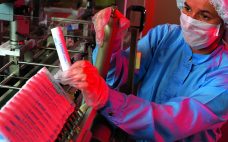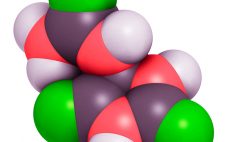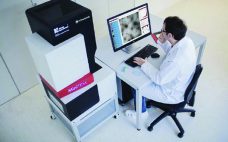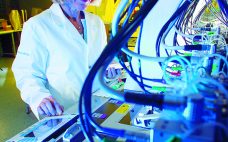Often I am dismayed to hear local news reporting of early stage clinical milestones for therapies that may still be years in development. I assume that those reporters and news editors receive pretty much the same press releases that we do here at BPI. But I worry that a more general readership hears only the hype, missing details of the process and time required for approval. More than one letter to the editor has opined that “delays” in bringing new…
October 2017
October Spotlight
Introducing New Editorial Advisor Dr. Sanjay Nilapwar works as a purification process scientist in the novel-molecules group of Medimmune in Gaithersburg, MD, where he is also part of the platform chemistry, manufacturing, and controls (CMC) development team for antibody–drug conjugate products. In this position, he looks after the transitioning of ADC and monoclonal antibody (MAb) molecules as candidate drugs from development to the manufacturing stage, which encompasses cycles 1 and 2 purification process development, technology transfer and related CMC aspects…
Particulate Contamination in Single-Use Systems: Challenges of Detection, Measurement, and Continuous Improvement
Patients receiving particulate contamination through parenteral delivery of biopharmaceuticals presents a significant potential health risk. However, the severity of that risk often is unclear. It depends on the route of administration, dosage volume administered, particle properties and amount received, and the ultimate fate of particles within a patient’s body (1). The appearance of particulate contamination also can be a visible indicator of product quality. Consequently, when such contamination is discovered within biopharmaceutical manufacturing operations, often it triggers costly investigations and…
Recent Advances in Endotoxin Removal: An Upgrade to a Traditional Method and a New Adsorption Chemistry
Endotoxin contamination has been the bane of the bioprocessing industry since its inception. Endotoxins are everywhere: They are toxic and/or interfere with every type of therapeutic, diagnostic, and research product; they are indestructible within the limits of product tolerance; and they are difficult to remove (1–4). Beyond that, they interact with various biological species in ways that prevent accurate measurement (5, 6). Managing these issues has been a focus of the industry for at least half a century, yet it…
Viral Vector Particle Integrity and Purity Analyses in Early Process Development
Gene therapy is the transfer of genetic material to a patient’s cells to achieve a therapeutic effect. Therapeutic DNA typically is delivered using a viral vector system, and adenoviruses have been used for this purpose for over 20 years (1–3). Within the past 10 years or so, lentiviruses have shown promise in clinical trials (1–3), and adenoassociated viruses (AAVs) have been used in the first approved gene therapies in the Western world (4). The number of gene therapy applications based…
Development of a Host-Cell Protein Platform Assay for a Chinese Hamster Ovary Cell Line
The Chinese hamster ovary (CHO) cell line is the most prevalent biopharmaceutical expression system and has been proven safe for commercial production of protein therapeutics (1). However, even after multiple purification steps, biopharmaceuticals contain residual host-cell protein (HCP) impurities that pose a potential safety risk to patients (2). Health authorities demand close monitoring of HCP impurities and require sensitive analytical methods with high coverage: the ability to detect a broad range of HCP impurities (3, 4). Polyclonal sandwich immunoassays are…
Moving DSC Downstream: Exploiting Differential Scanning Calorimetry As a Process Development Tool
The primary goal of biopharmaceutical process development is to determine what steps and conditions will maximize and optimize yields of purified product in the most reproducible, robust, and cost-efficient way. Characterized by high batch-to-batch comparability minimizing economic losses associated with batch failures, success relies on a thorough understanding of a given biological drug. Determining how its activity and stability are affected by processing and how to mitigate and control associated risks is advocated by a quality by design (QbD) approach.…
The 2017 World Biological Forum: Successes and Future Trends in Continuous Biomanufacturing
Continuous biomanufacturing was a central topic at the fourth annual World Biological Forum in Oxford, UK, on 26–28 June 2017. A well-rounded lineup of presenters appeared at this forum held in Oxford University’s Lady Margaret Hall, an eclectic location that well captured the historic charm of the university. Delegates were well supported throughout the meeting with generous meals, refreshments, and assistance provided by helpful staff. Papers were presented in Talbot Hall in the center of the college. The stately main…
Ask the Expert for Better Single-Use Powder Containment for Media and Buffers
Dave Howes (senior applications specialist at ILC Dover) introduces his company’s market-leading solution for single-use powder containment. Howes’s Presentation Some challenges in biopharmaceutical powder manufacturing include optimizing open-suite facilities; minimizing product loss from spills; lessening waste and cross-contamination; reducing worker exposure to airborne particulates; and lowering the risk of ignition with flammable materials. Characteristics to look for in a powder-transfer system are a system design that is exclusively meant for powders (not adapted from liquid-transfer designs) large-diameter top openings for…
Ask the Expert: Human-Error Reductions — Proper Task Performance in GMP Biomanufacturing
Tony Fultz (director of upstream manufacturing at Fujifilm Diosynth Biotechnologies) presented an “Ask the Expert” webinar on 23 August 2017. Fultz’s Presentation Human error was responsible for about 75% of batch failures at contract manufacturing organization Fujifilm Diosynth Biotechnologies in 2016. Technicians operate in a dynamic and stressful environment, both contributing factors to human error. With multiple projects running concurrently, some employees are involved in executing several processes during a shift. The company has several ways of reducing human error:…








